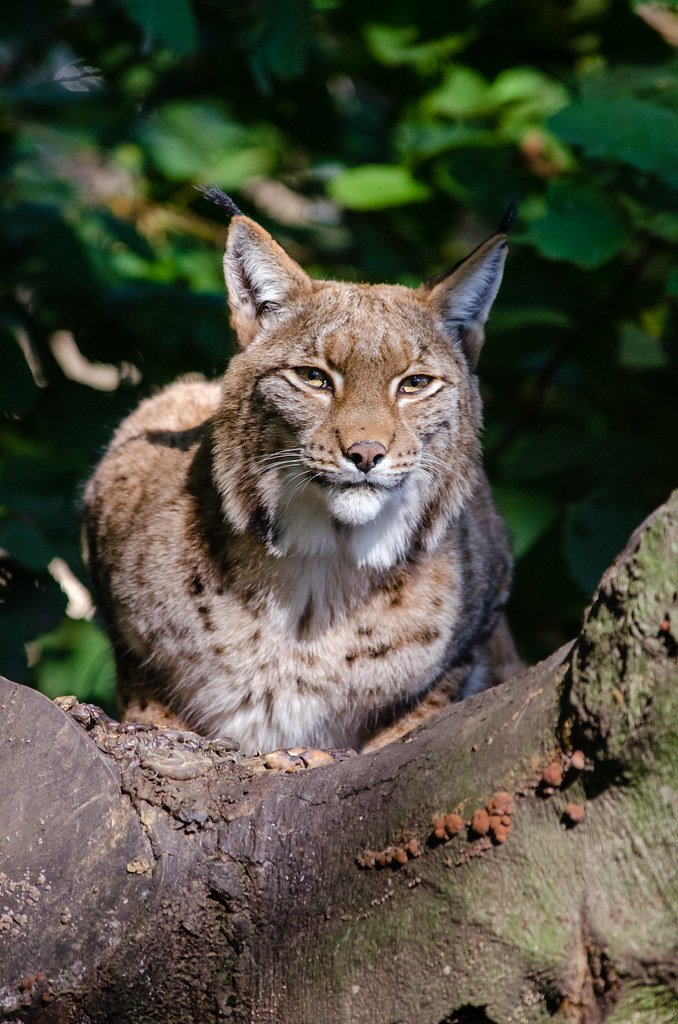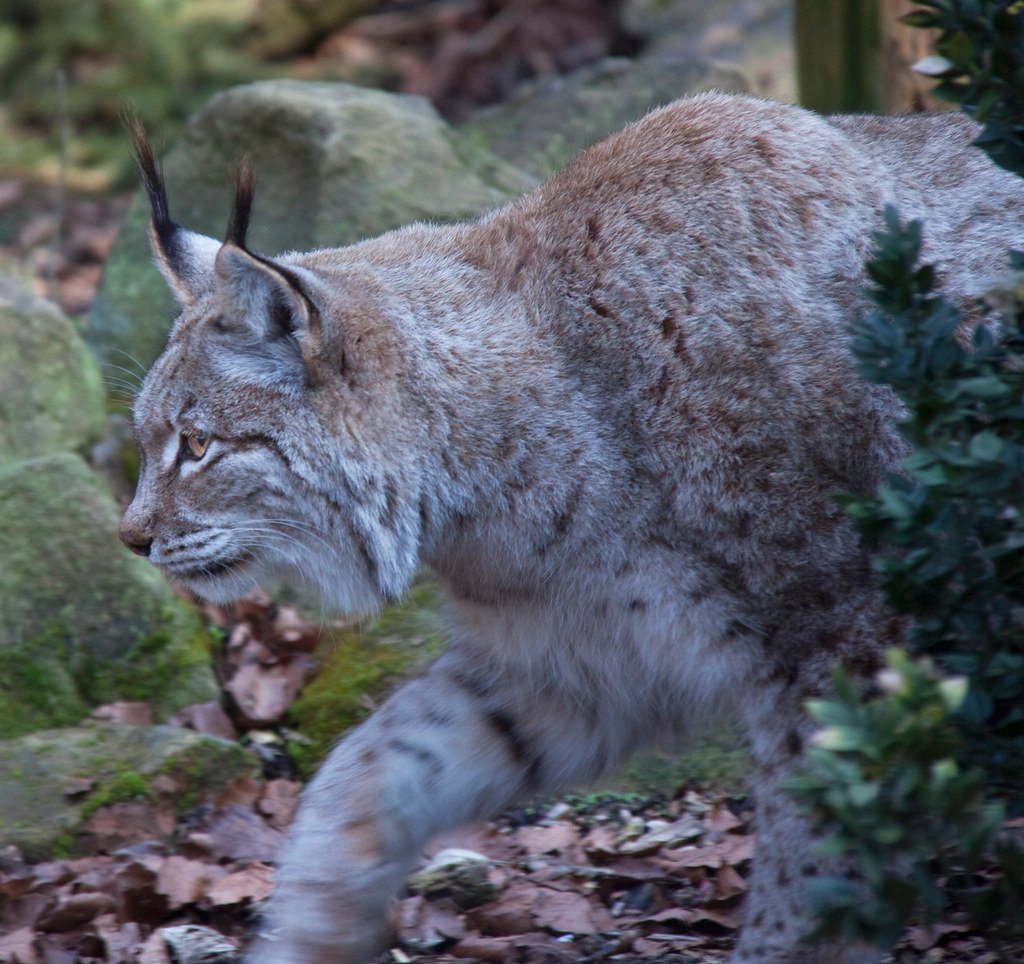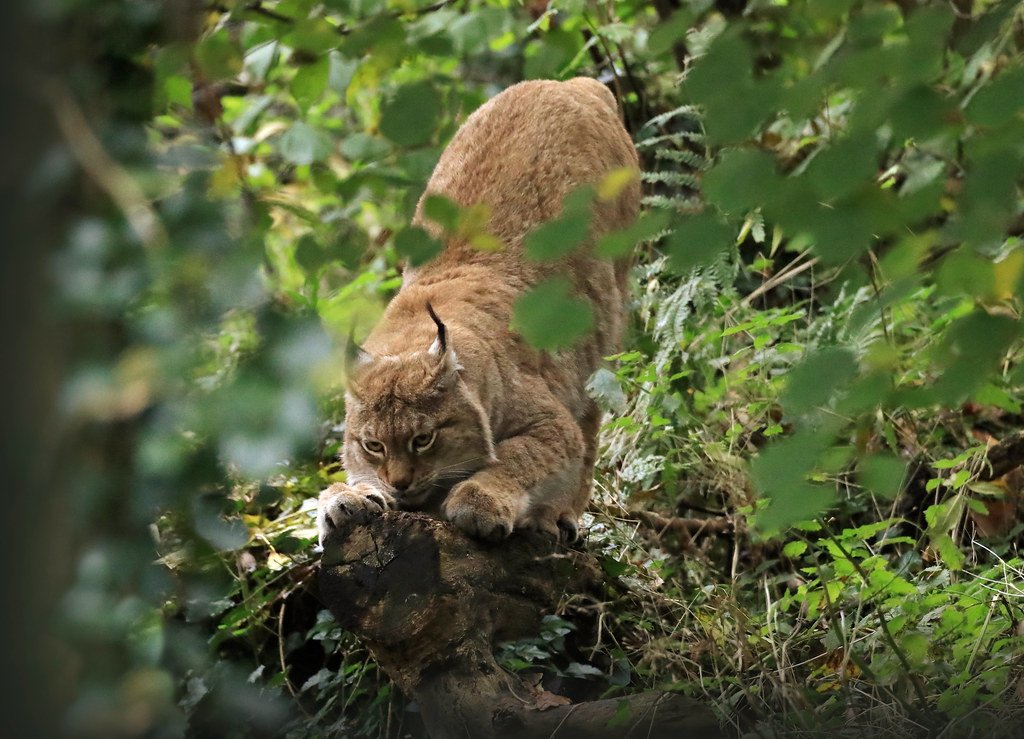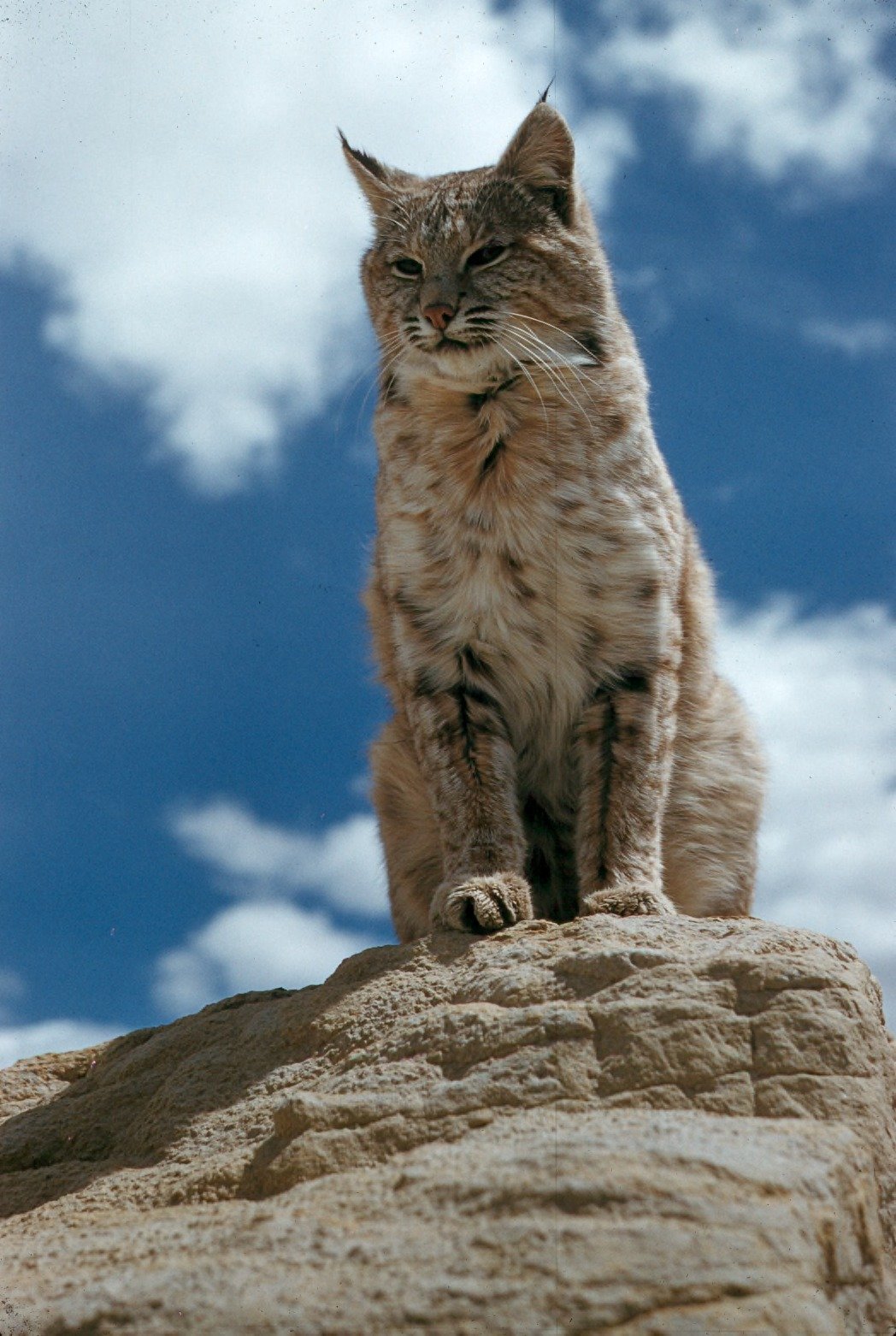Picture this: it’s twilight in a snow-covered forest. The silence is so complete you can hear your own heartbeat. Somewhere in the shadows, a ghost-like predator moves through the landscape with the grace of falling snow and the precision of a surgeon. You might be standing three feet away and never know it’s there. This is the world of the lynx—nature’s ultimate silent stalker.
The Evolution of Silence

Eurasian lynx makes a range of vocalizations, but is generally silent outside of the breeding season. This remarkable quiet isn’t just a random trait—it’s the result of millions of years of evolutionary fine-tuning. All living species of Lynx are thought to descend from Lynx issiodorensis, which first appeared during the early Pliocene in Africa, around 4 million years ago. Through countless generations, these cats have perfected the art of stealth hunting. Their ancestors discovered that in the dense forests of the north, sound travels far, and any noise could alert potential prey. The silent ones survived, bred, and passed on their ghostly genes.
Snowshoe Paws: Nature’s Silencers

The large, broad paws are covered in long, thick fur and can spread as wide as 10 cm (3.9 in) to move quickly and easily on soft snow. Think of a lynx’s paws as the ultimate stealth technology—part snowshoe, part silencer. Their long legs help them move through the thick powder and their large, webbed paws have hair underneath to keep them warm and stop them slipping. Those paws hit the ground with a spreading toe motion to help the animal walk on top of the snow, forming the perfect snowshoe. But here’s the genius part: that thick fur on their paws doesn’t just provide insulation and grip. It acts like a natural muffler, absorbing the sound of each footstep. Moreover, its silent, snowshoe-like paws allow it to weave silently through the deep snow of its boreal forest home with deadly precision. When a 30-pound lynx can walk across fresh snow without making a sound, you know evolution has crafted something extraordinary.
The Eyes That Pierce Darkness

With keen eyesight and hearing exceeding that of most animals, this large carnivore is attributed with an uncanny ability to spot prey even in the most snow-hidden spots of its habitat, reinforcing its position as an adept predator. A lynx’s eyes are remarkable hunting instruments, perfectly adapted for nocturnal prowling. Cats’ retinas house some 400,000 rods per square millimeter, as compared to 160,000 rods per square millimeter in humans. These rod cells are specialized for low-light vision, giving lynxes the ability to hunt effectively in conditions that would leave other predators stumbling around blind. First, a cat’s field of vision is 200 degrees, as compared to a human eye’s 180 degrees. Imagine having peripheral vision so wide you could see behind your own shoulders—that’s the lynx’s visual advantage in detecting prey movement.
Ears That Hear Whispers

The most important senses of the lynx are its sight and hearing, which are extremely keen. While the lynx has a good sense of smell, it is not as important for hunting as sight or hearing. Those distinctive black ear tufts aren’t just for show—they’re sophisticated sound-gathering equipment. Its ears, for instance, are not only spotted with hair to filter distractions but are also tipped with sharp, black tufts that aid in directionally accurate hearing. Think of them as tiny satellite dishes, fine-tuning the lynx’s ability to pinpoint the exact location of a sound. Although we don’t know for sure it’s suggested that the lynx’s ear tufts are used to improve their hearing. Another common theory is that they act as whiskers to help them sense their environment. In the hushed world of a snow-covered forest, being able to hear a mouse’s heartbeat from twenty feet away isn’t science fiction—it’s survival.
The Art of Ambush Beds

The lynx will roam or wait (in what researchers often term “ambush beds”) on certain trails that snowshoe hares frequent, pounce on a hare and kill it by a bite on its head, throat or the nape of its neck. Picture a lynx choosing its hunting spot with the calculated precision of a chess master. These “ambush beds” aren’t random resting places—they’re strategically selected vantage points along game trails. The typical hunting strategy is patience, stalking prey or crouching in wait beside a trail. Often the surprised quarry is overtaken and dispatched in a single, furious bound. A lynx might wait motionless for hours, becoming one with the landscape. Snow might accumulate on its fur, leaves might settle on its back, but it remains statue-still, waiting for that perfect moment when a hare comes hopping down the trail, completely unaware of the death that waits in the shadows.
Stalking Techniques: The Ghost Walker

The lynx stalks its prey animal, sneaks close and surprises it with a quick pouncing attack. When a lynx decides to actively hunt rather than ambush, it becomes a master of invisible movement. One such technique is stalking, where the lynx silently approaches its prey and waits for the perfect moment to launch an attack. This method allows the lynx to get close to its prey without alerting them. The cat moves like liquid shadow, placing each paw with surgical precision. Every muscle fiber is controlled, every movement calculated. To be successful, it must get within a few metres of its prey. The lynx does not chase the prey, and usually gives up if the attack does not succeed in 20–50 metres. This isn’t a marathon hunter—it’s a sprint specialist that relies entirely on the element of surprise.
Camouflage: The Disappearing Act

Moreover, the lynx boasts a coat peppered with dark spots that serve as perfect camouflage, enabling it to move stealthily undetected. A lynx’s coat is like a living ghillie suit, perfectly adapted to its environment. In summer, the coat of the lynx has a reddish grey tone, and in winter it is greyish white. The coat has brown or black spots and streaks, but some individuals have almost no spots. This seasonal color change is nature’s way of ensuring the lynx remains virtually invisible year-round. Against the dappled light of a summer forest or the stark contrasts of a winter landscape, a motionless lynx becomes part of the scenery. The lynx’s colouring, fur length and paw size vary according to the climate in their range. In colder northern climates lynx have thicker and lighter fur as well as larger and more padded paws that are well-adapted to snow.
The Science of Stealth Movement

The large size of the paws helps distribute the lynx’s weight over a larger area, allowing it to move more stealthily and efficiently across different terrains. The paws also act as snowshoes, providing the lynx with better mobility in snowy environments. Weight distribution is crucial to silent movement, and lynxes have mastered this principle better than any other forest predator. The lynx’s padded paws help it move silently through its habitat, whether it’s stalking prey or patrolling its territory. When you spread your weight over a larger surface area, you create less pressure per square inch—meaning less chance of snapping a twig, crunching through snow, or rustling leaves. Its adaptations, such as camouflage, enhanced eyesight, and stealthy movement, enable it to approach prey undetected. The lynx’s quiet hunting strategy increases its chances of capturing prey successfully, as the element of surprise plays a crucial role in hunting success.
Nocturnal Advantages: Hunting in the Darkness

The Eurasian lynx is primarily nocturnal, spending its nights hunting and its days resting in dense cover. There’s a reason lynxes prefer the cover of darkness—they’ve turned night into their personal hunting ground. Canada lynxes hunt around twilight or at night, the time when snowshoe hares tend to be active. In the darkness, their superior vision gives them an almost unfair advantage over their prey. This species of Lynx is primarily known for its unique hunting methodology, being a stalk-and-ambush hunter, usually operating under the cover of darkness. While their prey stumbles through the dark world, relying on sound and scent, the lynx moves through it like it owns the night, seeing clearly what others can’t even imagine.
The Precision Strike

Since felids are mostly solitary hunters, each bite must be made with precision, and must be positioned to kill the prey as soon as possible to avoid risks to the predator during the struggle. An important factor for hunting success is surprise. When a lynx finally strikes, it’s not a chaotic brawl—it’s a surgical procedure. Large prey animals have neat bite marks in their necks, and the lynx usually starts its meal from the prey’s haunch. The killing bite is delivered with the precision of a master craftsman. The neck and jaw muscles give the lynx the bite force and gripping power it needs for hunting, in addition to serving as shock absorbers which distribute the impacts the animal incurs when it hunts to the entire body. It’s over in seconds—a testament to the lynx’s perfect fusion of stealth and explosive power.
Muscular Adaptations for Silent Hunting

Skeletal muscles make up 56.5 % of the Canada lynx’s body weight. This isn’t just about being strong—it’s about having the precise muscle control necessary for silent movement. We hypothesized that the musculoskeletal anatomy of lynx should show traits for catching large prey. A lynx’s body is a finely tuned machine where every muscle fiber serves the purpose of stealth. The high percentage of muscle mass allows for incredibly controlled movement—each step calculated, each leap precisely calibrated. Its hindlimbs are longer than the forelimbs, so its back slopes downward to the front. This unique body structure allows the lynx to compress and spring like a loaded coil, delivering devastating power from a silent, motionless position.
Territory Marking Without Sound

As with other cats, its scent marks may consist of faeces, urine, or scrape marks, with the former often being left in prominent locations along the boundary of the hunting territory. Even when marking territory, lynxes maintain their commitment to silence. Adult lynx males and females maintain separate territories, which they mark with scent markings and scratches on trees. Rather than roaring or calling like other large predators, lynxes communicate through scent and visual markers. Its remarkable sense of smell, which it shares in common with the wolf, another prominent predator in the wild, aids it in marking large territories and detecting traps set by man. This silent communication system ensures that they can maintain their territories without alerting prey animals to their presence through vocalizations.
Hunting Success Rates and Silent Strategy

That would sound like an animal being silent and suddenly doing short pounces or chases through the woods, making crashing and banging sounds, before ambushing their prey. If there were crunching sounds at the end of that activity, they knew the cat was successful. But if there wasn’t any chomping noise, they assumed it was a failed hunting attempt. Recent research using sound recording devices has revealed the fascinating pattern of lynx hunting—long periods of absolute silence broken by brief moments of explosive action. The team also found differences between individuals in hunting success. On the audio, the scientists could hear when a lynx chased an animal and whether or not it was successful at killing it. The most successful hunters are those that can maintain silence the longest, getting closest to their prey before the final, unavoidable noise of the attack itself.
The Retractable Claw Advantage

The lynx has longer legs than a domestic cat, and like all felines, it can detract its claws. The claw marks can usually not be seen in the tracks. Those razor-sharp claws aren’t just weapons—they’re stealth tools. The claws are sharp and fully retractile. By keeping their claws retracted during stalking, lynxes avoid the clicking and scraping sounds that would occur if the claws contacted rocks, ice, or hard ground. Lynx hunt by stalking and pouncing on their prey because of these hunting techniques their paws have retractable claws to capture such prey. These claws are also used for fighting and climbing to escape predators. It’s like having built-in silencers on their feet—they can move across any terrain without the telltale sound of claws that would give away their position.
Environmental Adaptation for Stealth

The lynx is found in dense subalpine forest and willow-choked corridors along mountain streams and avalanche chutes, the home of its favored prey species: the snowshoe hare. Lynxes don’t just hunt silently—they choose environments that enhance their stealth abilities. The Eurasian lynx inhabits rugged country providing plenty of hideouts and stalking opportunities. Depending on the locality, this may include rocky-steppe, mixed forest-steppe, boreal forest, and montane forest ecosystems. Dense vegetation provides natural sound dampening, while the irregular terrain offers countless opportunities for concealment. The lynx is heavily dependent on its habitat, generally opting for dense forests with ample fallen trees and stumps to facilitate their stalking and ambushing hunting techniques. The prevalent habitat for Snowshoe Hares also doubles up as the main hunting grounds for the Lynx. They’ve essentially chosen to live in nature’s own recording studio—a place where sound is naturally muffled and absorbed.
Weather Conditions and Silent Hunting

Many lynx are well adapted to life in the snow. They have soft, fluffy fur that grows long in the winter and wide, furry paws that make it easier to traverse snow-covered landscapes. Snow becomes an unexpected ally in the lynx’s quest for silence. Fresh powder muffles footsteps even further, while the white landscape enhances their winter camouflage. Despite its adaptations for moving in snow, it finds loose, deep snow difficult to deal with and cannot survive in areas with snow depths exceeding 100 cm (39 in). However, in optimal snow conditions—that perfect depth where their huge paws give them an advantage but movement remains silent—lynxes become nearly undetectable. The soft crunch of snow under normal feet becomes a whisper under their fur-padded paws, and their prey never hears death approaching until it’s far too late.
The Solitary Silent Hunter

The lynx is a solitary animal, meaning it prefers to live and hunt alone. This behavior has evolved as an adaptation to maximize the availability of resources in its habitat. By avoiding competition with other individuals, the lynx can secure a larger territory and access abundant prey resources. Solitary hunting isn’t just about avoiding competition—it’s essential for maintaining stealth. Eurasian lynxes are also solitary animals. Groups make noise, leave more tracks, and create disturbances that alert prey. By hunting alone, a lynx maintains complete control over its acoustic footprint. Lynx


